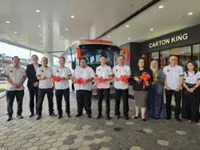The dried up Lake Cova in Kota Damansara has the potential to be re-established as a green connector, serving as a stormwater detention basin and recreational park.
A THREE-YEAR project is underway to create a network of ecological and physical pathways by connecting isolated green spaces in the Klang Valley.
Called Rangkaian Urban Green Spaces (Rugs), the initiative by Malaysian Nature Society (MNS) covers the Kuala Lumpur city centre and an area it has named Damansara-Pantai Arc.
Already a subscriber? Log in
Save 30% OFF The Star Digital Access
Cancel anytime. Ad-free. Unlimited access with perks.





